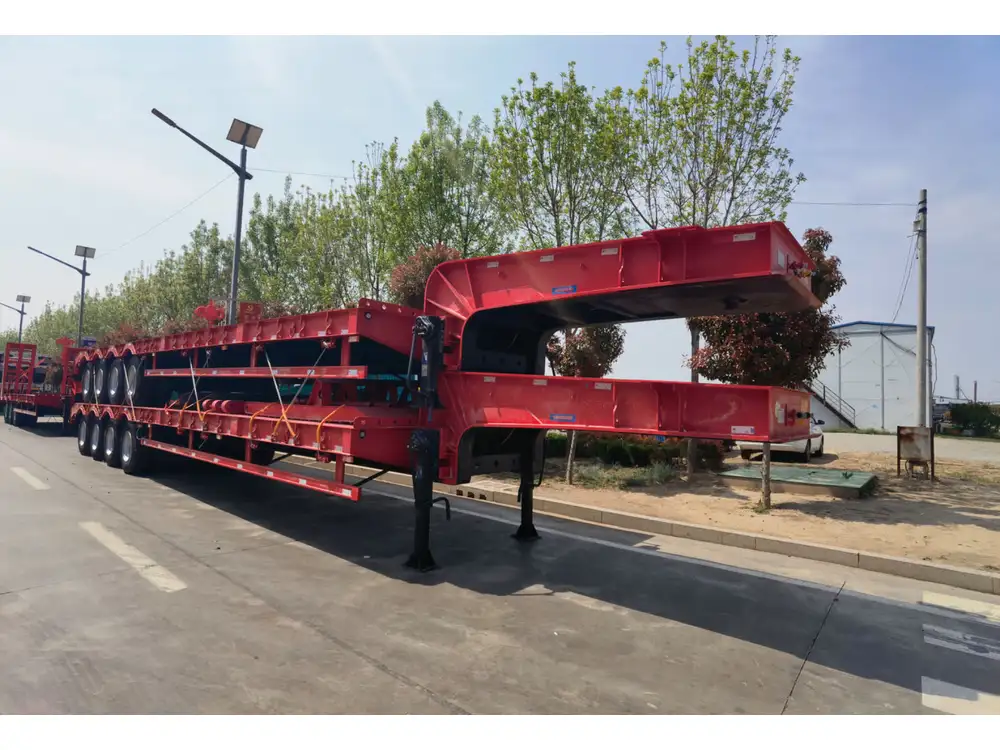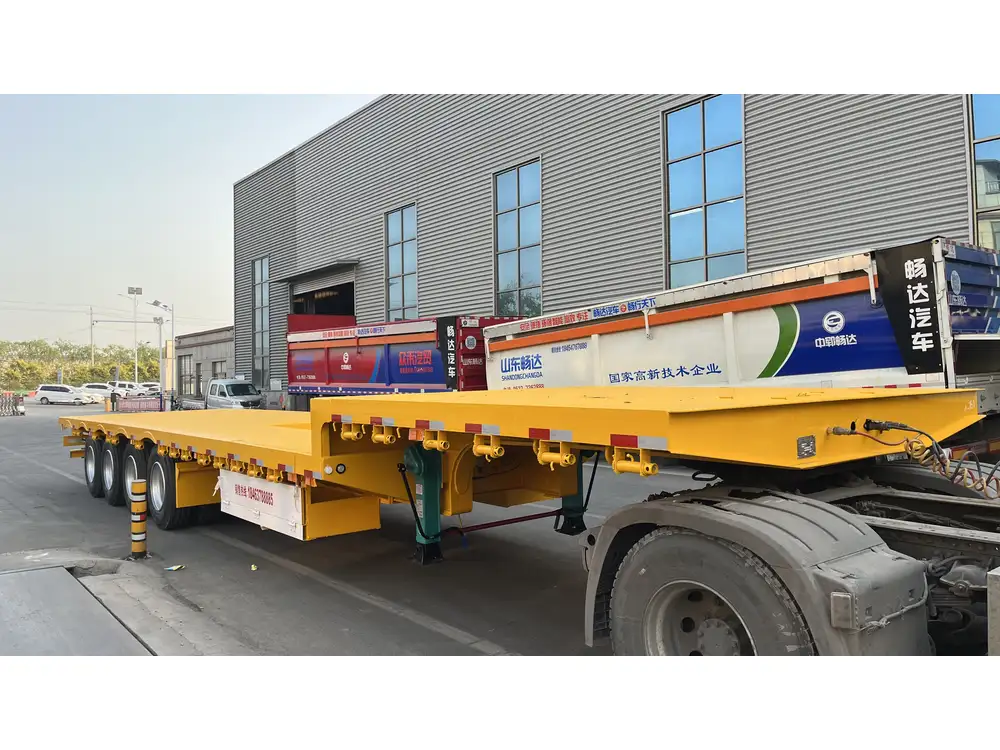Transporting mowers securely is an essential part of any landscaping or lawn care business. If not anchored properly, equipment can shift during transit, leading to potential damage or accidents. The following comprehensive guide offers detailed insights into techniques and best practices for anchoring mowers to a flatbed trailer, ensuring safe and efficient transport.
Essential Equipment for Secure Tie-Downs
Before delving into the specific methods of anchoring mowers, let’s first highlight the necessary equipment you will need. Having the right tools at hand simplifies the process and enhances safety.
| Equipment | Description |
|---|---|
| Tie-Down Straps | Heavy-duty straps (ratchet or cam buckle style) that hold mowers in place. Ensure they are rated for the weight of your mower. |
| Wheel Chocks | Blocks placed against the wheels to prevent rolling. Ideally made from rubber or plastic for durability and traction. |
| Tow Hook or D-Rings | Fixed points on the trailer where tie-down straps can be attached securely. |
| Ladder Rack or E-Track System | Optional systems that provide flexible anchoring points along the sides of the trailer. |
| Gloves | For hand protection while handling equipment. |
Step-by-Step Guide: Anchoring Your Mower

1. Preparing the Trailer
Inspection and Cleaning: Before placing the mower on the flatbed trailer, ensure it is clean and free from debris. Inspect the trailer for any sharp edges or protrusions that could damage the mower during loading or transport.
Placement: Position the mower towards the front of the trailer to enhance stability during transit. This location helps in distributing the weight evenly and minimizes the chance of trailer swaying.
2. Utilizing Wheel Chocks
Why Use Wheel Chocks: Employing wheel chocks is pivotal to prevent the mower from rolling off the trailer. This step is often overlooked but is vital for secure transport.
Placement Method:
- Place the wheel chocks directly against the rear wheels of the mower.
- Ensure they are snug and provide enough friction to hold the mower in place during transportation.
3. Choosing the Right Tie-Down Straps
Types of Tie-Down Straps:
Ratchet Straps:
- Offer high tension and are easy to adjust.
- Guarantee a tight fit without excess slack.
Cam Buckle Straps:
- Perfect for lighter mowers.
- Provide an adequate hold while being quicker to release.
Weight Capacity: Ensure that the straps’ weight capacity exceeds the total weight of the mower and any additional equipment.

4. Securing the Mower
Tie-Down Points: Use the mower’s designated tie-down points or areas that are structurally reinforced.
Method of Securing:
- Attach one end of the strap to a trailer D-ring or anchor point.
- Loop the strap under the mower’s frame and attach the other end to the corresponding D-ring.
- Ensure the strap is straight and tightened firmly without excessive slack.
- Use multiple straps, typically at least two for a standard mower, with one securing the front and another the rear.
Tension Adjustment:
- After securing the mower, pull on the straps to check for tightness. Adjust as necessary to ensure no movement can occur.
5. Heavy-Duty Ratchet Straps: An Alternative for Larger Mowers
When transporting larger mowers, like zero-turn models, consider the following:
Cross-Strapping: This involves crossing two straps over the front and rear of the mower to create an “X” pattern. This offers additional stability and reduces the possibility of lateral movement.
Multiple Anchor Points: Utilize every available tie-down point, distributing the weight evenly across your trailer.

6. Additional Safety Measures
Inspect Before Transporting
Conduct a final inspection of the mower’s attachment points and the straps’ tension before hitting the road.
Speed Limit Awareness
Drive within the legal speed limits, and be cautious while turning or stopping, as sudden maneuvers can cause shifting.

7. Offloading the Mower
As vital as loading is the unloading process. Follow these steps to ensure safety:
Remove Wheel Chocks: Before releasing any straps, take off the wheel chocks to allow the mower to be moved.
Loosen and Remove Straps: Carefully release the tension on tie-down straps and unclip them from both the mower and the trailer.
Check Surroundings: Ensure the area is clear of obstacles before maneuvering the mower off the trailer.
Comparison Table: Different Tie-Down Methods
| Method | Pros | Cons |
|---|---|---|
| Single Strap | Simple and quick to set up | Might not provide sufficient stability for larger mowers |
| Cross-Strapping | Enhanced stability, reduces lateral movement | Requires more time and effort to set up |
| Multiple Straps | Distributes forces across the mower | Involves multiple points of attachment, thus increases complexity |
| Wheel Chocks | Provides additional anti-roll security | Need to ensure they are fitted properly, requires extra storage space |
Troubleshooting: Common Problems and Solutions

Problem: Mower Shifts During Travel
Solution: Check the tightness of your straps and ensure you have adequate tie-down points. Consider using extra straps or additional wheel chocks.
Problem: Difficulty in Securing Larger Mowers
Solution: Make use of ratchet straps, which provide better grip and can handle heavier loads. Always consider multiple anchor points.
Problem: Wear and Tear on Straps
Solution: Inspect straps regularly for signs of fraying or damage; replace them as necessary to avoid failure during transport.

Summary of Key Points
- Planning: Select the right equipment and have a clear strategy before starting the loading process.
- Secure Loading: Make sure the mower is positioned correctly and utilize wheel chocks effectively.
- Utilize the Right Straps: Choose the appropriate type of straps for your specific mower size and weight.
- Final Checks: Always perform thorough inspections before and after loading to ensure everything is secure.
Conclusion: Safety First for a Smooth Ride
Transporting mowers on a flatbed trailer is a crucial aspect of many landscaping businesses. By following our comprehensive guide on how to anchor mowers securely, you can ensure both safety and efficiency during transit. Proper loading techniques not only protect your equipment but also enhance your operational efficiency, allowing your landscaping business to thrive without setbacks.
For further inquiries or additional resources on trailer safety, feel free to contact us or explore our website for more information. Your success is our priority, and we are dedicated to providing you with the tools and knowledge necessary for effective equipment transport.



